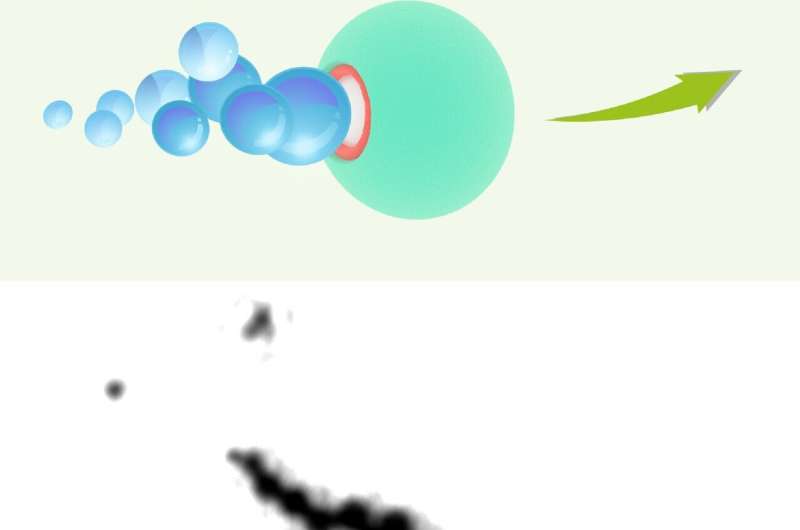Treating rheumatoid arthritis with micromotors

Rheumatoid arthritis is a chronic inflammatory disorder marked by joint pain, swelling and damage. Although medications, such as steroids, anti-inflammatory drugs and immunosuppressants, can help slow joint destruction and relieve pain, they have side effects and aren't completely successful. Now, researchers reporting in ACS' Nano Letters have developed magnesium-based micromotors propelled by hydrogen bubbles, which improved rheumatoid arthritis symptoms when injected into the joints of rats.
Scientists have linked rheumatoid arthritis development to the excess production of reactive oxygen species (ROS). ROS can oxidize and degrade cartilage and bone, as well as activate the expression of inflammatory cytokines. A new type of therapy, hydrogen gas, can neutralize ROS and decrease inflammatory cytokine levels when given to patients in drinking water. However, the gas is poorly soluble in body fluids and quickly eliminated when given orally, limiting its therapeutic effects. Fei Peng, Yingfeng Tu, Yingjia Li and colleagues wanted to find a way to produce and deliver hydrogen gas directly inside an inflamed joint.
The researchers based their system on magnesium-based micromotors—tiny spheres that react with water to produce hydrogen bubbles, which propel the motors. They coated the micromotors with hyaluronic acid, a joint lubricant, leaving a small opening for the magnesium to react with water. When placed in simulated joint fluid, the micromotors showed prolonged, sustained release of hydrogen bubbles and could move on their own. The team then injected the micromotors into the joints of rats that served as an animal model of rheumatoid arthritis and used ultrasound to visualize them. Compared with uninjected rats, the treated rats showed less-swollen paws, reduced bone erosion and lower levels of inflammatory cytokines.
Although the micromotors still need to be tested in humans, they show great potential for the therapy of rheumatoid arthritis and other inflammatory diseases, the researchers say.
More information: Nano Letters (2021). pubs.acs.org/doi/abs/10.1021/acs.nanolett.0c04438
Journal information: Nano Letters
Provided by American Chemical Society




















